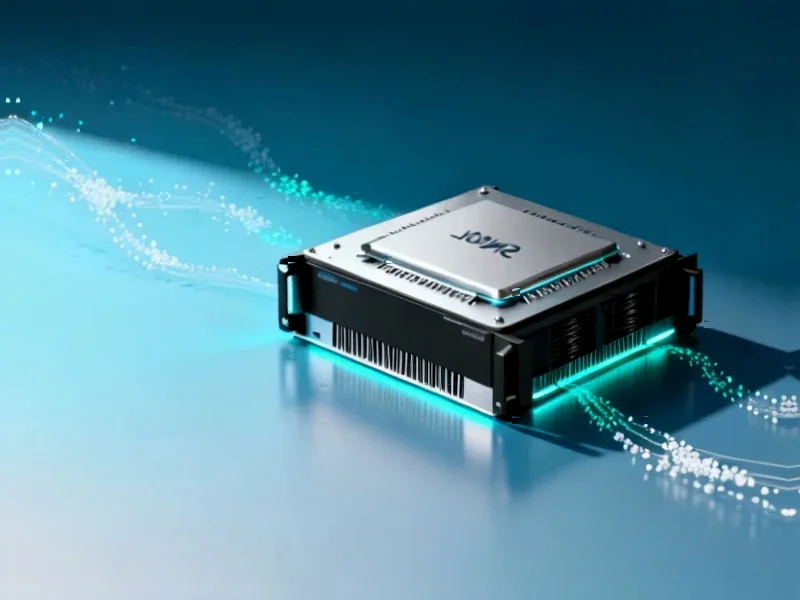According to MarketWatch, Daniel Loeb’s Third Point LLC made significant new investments in SK Hynix and Ebara during the third quarter, viewing them as undervalued beneficiaries of the artificial intelligence buildout. The hedge fund’s investor letter specifically highlighted SK Hynix KR:000660, a South Korean memory manufacturer, and Ebara JP:6361, a Japanese semiconductor-production equipment maker, as leaders in their respective industries trading at “meaningful discounts to their U.S. peers.” Loeb emphasized that both companies represent ways to participate in the AI trade at more attractive valuations than U.S. options provide, with the investments building on Third Point’s existing successful positions in Nvidia and TSMC. This strategic shift toward international AI infrastructure components reveals important market dynamics worth examining.
The Memory Bottleneck in AI Infrastructure
Loeb’s bet on SK Hynix underscores a critical technical reality that many investors overlook: memory is becoming the primary bottleneck in AI infrastructure. While most attention focuses on GPU processing power, the massive memory bandwidth requirements of large language models and AI training workloads create unprecedented demand for high-performance memory solutions. SK Hynix’s leadership in High Bandwidth Memory (HBM) technology positions them at the center of this demand surge. Each generation of HBM delivers significantly higher bandwidth than traditional GDDR memory, enabling the parallel processing capabilities that modern AI accelerators require. The technical challenge lies in stacking multiple memory dies vertically and connecting them through silicon vias (TSVs), a manufacturing complexity that creates substantial barriers to entry and protects the market position of established players like SK Hynix.
Semiconductor Equipment’s Critical Role
Ebara’s inclusion in Third Point’s portfolio highlights another often-underappreciated aspect of the AI supply chain: the specialized equipment required for advanced semiconductor manufacturing. Ebara’s expertise in chemical mechanical polishing (CMP) systems and vacuum technology addresses fundamental challenges in producing the complex 3D structures found in modern AI chips. As chipmakers transition to more advanced nodes and 3D packaging techniques, the precision and reliability of equipment like CMP systems become increasingly critical. The technical requirements for manufacturing HBM stacks, which involve thinning silicon wafers to extreme thinness while maintaining structural integrity, create specialized demand that equipment manufacturers like Ebara are uniquely positioned to serve. This represents a leveraged play on the entire semiconductor industry’s push toward more advanced packaging technologies.
The International Valuation Disconnect
The significant valuation gap between U.S. and international AI infrastructure companies that Loeb identified reflects broader market inefficiencies in understanding the global nature of semiconductor supply chains. While U.S. investors have concentrated on familiar names like Nvidia and AMD, they’ve often overlooked the equally critical components manufactured by Asian companies. This creates opportunities for sophisticated investors who recognize that AI’s infrastructure requirements extend far beyond GPUs to include memory, equipment, materials, and packaging technologies. The technical complexity of these supporting technologies creates durable competitive advantages and pricing power for market leaders, yet international companies often trade at substantial discounts to their U.S. counterparts despite similar growth prospects and technological leadership.
Technical Challenges in Scaling AI Infrastructure
The investments also reflect understanding of the formidable technical challenges in scaling AI infrastructure. Memory manufacturers face increasing difficulties in maintaining yield rates as HBM stacks grow taller and TSV densities increase. Similarly, semiconductor equipment companies must continuously innovate to meet the precision requirements of advanced nodes and 3D packaging. These technical hurdles create natural oligopolies where only companies with decades of manufacturing experience and substantial R&D budgets can compete effectively. The capital intensity and technical expertise required to stay at the forefront of these technologies create significant moats around established players, making them attractive long-term investments despite cyclical industry dynamics.
Strategic Implications for AI Investors
Loeb’s move signals a maturation in how sophisticated investors approach the AI ecosystem. Rather than chasing the most visible names, they’re building diversified exposure across the entire technology stack, from processors to memory to manufacturing equipment. This approach recognizes that AI’s growth will create multiple winners across different segments of the semiconductor value chain. The technical interdependencies between these components mean that bottlenecks in any part of the system can constrain overall growth, making investments in the entire ecosystem strategically important. As AI models continue to grow in size and complexity, the demand for advanced memory and manufacturing capabilities will only intensify, potentially creating sustained tailwinds for the companies that Loeb has targeted.




